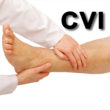Can You Win Disability Benefits for Chronic Venous Insufficiency?
December 7, 2021
When they are working like they should, the valves in your veins make sure that blood flows toward your heart. But when these valves don’t work well, blood can also flow backward causing it to pool in your legs. This is a condition known as chronic venous insufficiency (abbreviated CVI). Although CVI is not a life-threatening condition, it can be excruciatingly painful and disabling. If not treated, chronic venous insufficiency can cause swelling, varicose veins, and leg ulcers, among other symptoms. Johns Hopkins Medicine estimates that CVI affects about 200,000 Americans each year.
The Social Security Administration (SSA) recognizes CVI as a disability that in some cases qualifies for monthly Social Security Disability Insurance (SSDI) or Supplemental Security Income (SSI) benefits. To determine if you are medically eligible for disability benefits, Social Security has a set of procedures in place. These procedures are published in a handbook known as the “Blue Book,” and it includes a list of various disabling conditions known as “listings.” The criteria for benefits approval for chronic venous insufficiency fall under the listings for cardiovascular disorders. To meet the criteria for this listing, Listing 4.11, you must exhibit extensive brawny edema (severe leg swelling) involving at least two-thirds of the leg between the ankle and knee or the distal one-third of the lower extremity between the ankle and hip or superficial varicosities, stasis dermatitis, (burning, cramping, or itching of the legs) and either recurrent ulceration or persistent ulceration (wounds) that have not healed following at least three months of prescribed treatment.
However, most often an applicant’s medical conditions will not precisely meet the Blue Book’s technical requirements to qualify for disability payments. But, there is a second way to qualify. You may be eligible for Social Security Disability benefits if you can prove that, due to the limitations of your condition, you are unable to perform any job in the national economy, considering your age, education, and past work.
To qualify, you must demonstrate that the symptoms of your impairment prevent you from sustaining full-time competitive employment on a consistent and reliable basis. All qualifying disabilities must be expected to last and keep you out of work for at least 12 months.
To prove that chronic venous insufficiency prevents you from maintaining fulltime employment, it is very important to ask your doctor to explain your medical situation, oftentimes using a form called the “Residual Functional Capacity” (RFC) form. The RFC form measures your physical abilities, and it allows your doctor to explain how your medical conditions limit you from working. The Social Security Administration will consider the RFC form along with other medical evidence—including physical examinations and ultrasounds that check the blood flow of the legs—to decide whether you qualify for Social Security Disability benefits. You should submit the results of these tests along with notes from your doctor detailing what kind of treatment you were prescribed and how your CVI condition responded.
If you have other impairments in addition to chronic venous insufficiency, you should also include these in your application for benefits. The Social Security Administration must take into consideration all of your impairments when deciding whether you qualify for disability benefits. For more on this subject read our blog article: Do Multiple Disabilities Improve the Odds of Receiving Benefits?
The path to winning Social Security disability benefits can be difficult to navigate, especially while living with a serious health condition. For this reason, you want a professional Chicagoland disability attorney in your corner to help you through the process and to fight for your rights. Call or email Nash Disability Law for a free evaluation of your situation. We have offices in Chicago and Palos Hills and we can help you avoid costly disability mistakes.


